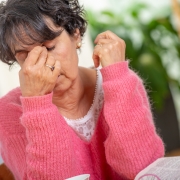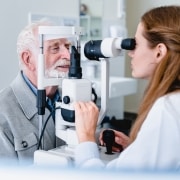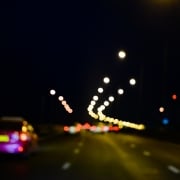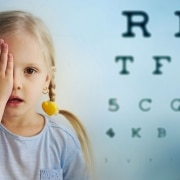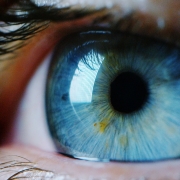If you or a loved one has low vision, you’re likely familiar with the challenges it brings to daily life. Tasks such as reading, recognizing faces, or navigating familiar spaces can become daunting. However, there’s another, less obvious consequence of vision loss that deserves our attention: its link to cognitive decline, including dementia and Alzheimer’s disease.
The Link Between Vision Loss and Cognitive Decline
Recent studies have confirmed a compelling relationship between visual impairment and cognitive decline. According to research published on PubMed and other reputable sources, individuals with untreated vision loss are at a significantly higher risk of developing dementia. This is a concerning revelation, but it also provides an opportunity for proactive intervention.
The connection between vision and cognitive health isn’t entirely surprising. Vision plays a critical role in how we engage with the world. When vision is impaired, it can lead to social isolation, reduced mental stimulation, and even depression—all of which are known risk factors for cognitive decline.
How Low Vision Aids Can Help
Low vision aids are tools designed to help individuals with visual impairments maximize their remaining vision. But their benefits go far beyond simply enhancing sight. By improving the ability to engage in vision-related activities, these aids can also help maintain cognitive health. Here’s how:
- Enhancing Social Interaction
- Vision impairment often makes it difficult to recognize faces, make eye contact, and read body language—essential components of meaningful social interaction. Social isolation, in turn, can accelerate cognitive decline. Low vision aids such as bioptic telescopes can help by enabling better facial recognition and improving the ability to read subtle social cues. This promotes more frequent and meaningful interactions, which are essential for maintaining cognitive function.
- Boosting Mental Stimulation
- Reading, whether it’s books, newspapers, or digital content, is a powerful way to keep the brain active. Magnifiers, screen readers, and other assistive devices can make reading accessible again, ensuring that individuals with low vision can continue to engage in mentally stimulating activities.
- Improving Quality of Life
- Struggling with daily tasks can be frustrating and disheartening, leading to a lack of motivation and decreased mental engagement. Low vision aids can restore a sense of independence, empowering individuals to handle everyday activities like cooking, shopping, or using technology. This renewed confidence can have a profound impact on overall mental well-being.
A Call to Action for Patients, Caregivers, and Healthcare Professionals
Given the strong evidence linking vision loss to cognitive decline, it’s time to advocate for greater access to low vision aids. Patients, families, caregivers, and healthcare providers should consider these tools not only as a means to address vision challenges but also as a proactive strategy to support cognitive health.
Additionally, funding agencies and referral sources should recognize the broader benefits of low vision aids and prioritize their inclusion in treatment plans. By doing so, we can help individuals with low vision maintain their independence, preserve their cognitive function, and reduce their risk of developing dementia.
The Role of Bioptic Telescopes
One particular low vision aid, bioptic telescopes, deserves special attention. These devices are designed to enhance distance vision, making it easier to recognize faces, read signs, and navigate new environments. Beyond these practical applications, bioptic telescopes can play a crucial role in reducing the risk of cognitive decline. By improving facial recognition and enabling better social interaction, these tools help combat two major contributors to cognitive decline: social isolation and reduced mental stimulation.
The Bottom Line
Low vision aids are much more than tools to improve sight. They are an investment in overall well-being, offering a tangible way to reduce the risk of cognitive decline. If you or someone you know is living with low vision, don’t wait to explore the options available. Speak with an eye care professional today about how these devices can enhance your quality of life and support your cognitive health.
For more information, check out the growing body of research linking vision loss to cognitive decline. A good starting point is the PubMed database, where you’ll find a wealth of studies on this important topic.
Let’s work together to ensure that low vision aids are recognized and utilized not only for their vision-enhancing benefits but also for their potential to protect cognitive health and independence.


